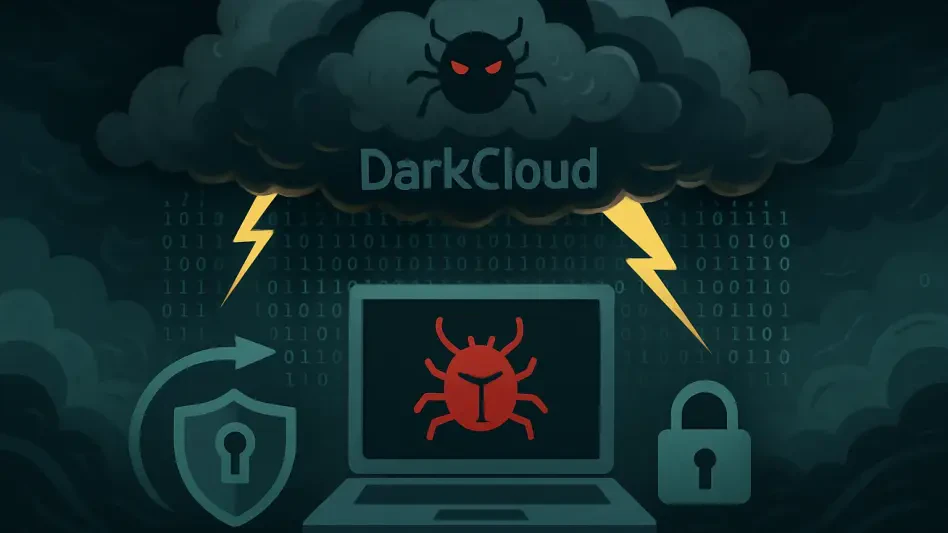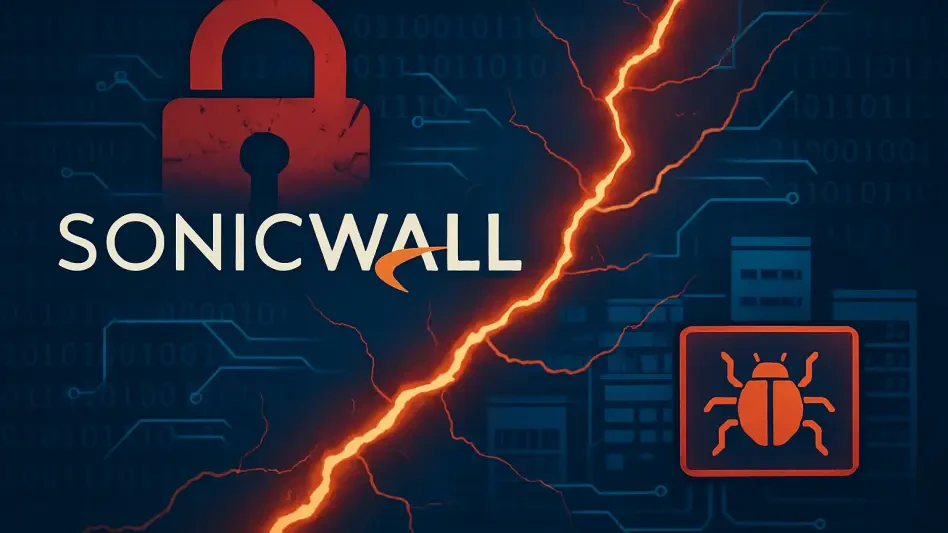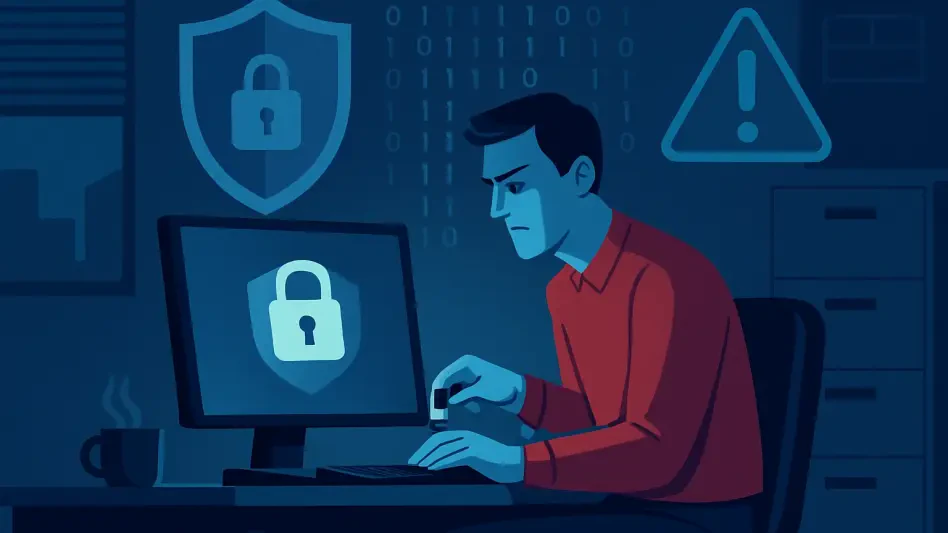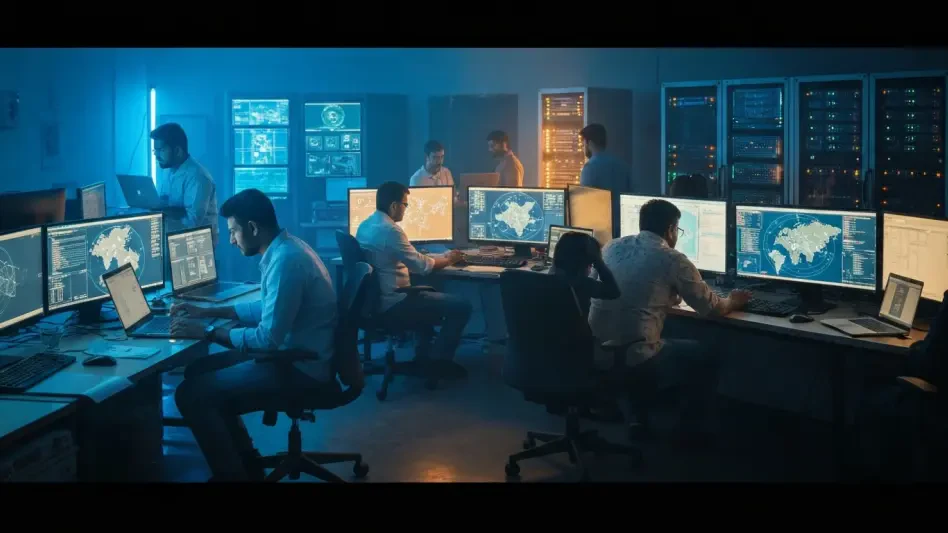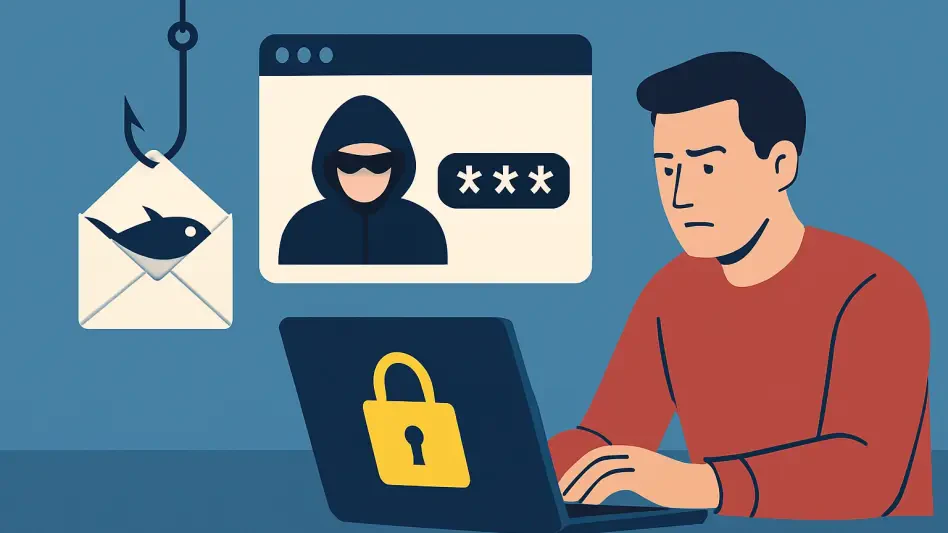In an era where cyber threats evolve at an alarming pace, a new variant of the DarkCloud information stealer has emerged as a particularly insidious challenge for Windows users and cybersecurity professionals alike, demanding urgent attention. Identified by analysts in early July of this year, this sophisticated malware targets sensitive login credentials and financial data with a level of cunning that sets it apart from traditional threats. Its ability to bypass modern security defenses through advanced evasion techniques and a multi-stage deployment process underscores a growing problem in the digital landscape. Unlike conventional malware that relies on detectable file signatures, this version of DarkCloud operates in a fileless manner, exploiting both technical vulnerabilities and human behavior to infiltrate systems. This alarming development raises critical questions about the effectiveness of current security measures and highlights the urgent need for innovative solutions to combat such stealthy attacks. As cybercriminals refine their tactics, understanding the mechanisms behind this threat becomes essential for safeguarding personal and organizational data.
Unveiling the Infection Chain
The initial point of entry for this DarkCloud variant often begins with a deceptively simple phishing email, crafted to appear as an urgent business quote. These emails contain RAR archives that, once extracted, reveal a malicious JavaScript file disguised under a legitimate-sounding name. Executing this file sets off a complex infection chain that deploys the malware payload without leaving traditional file traces on the infected system. This fileless approach is a cornerstone of its stealth, as it evades detection by antivirus programs that rely on scanning for known file signatures. The malware specifically targets a wide range of sensitive information, including saved credentials, payment card details, and contact lists from popular applications such as major web browsers and email clients. By using targeted SQL queries, it extracts critical data like usernames, passwords, and credit card information directly from browser databases, posing a severe risk to both individual users and businesses that depend on these platforms for daily operations.
Beyond the initial deception, the infection process showcases a remarkable level of sophistication in its delivery mechanism. Once activated, the malware copies its initiating script to a public directory on the system and establishes persistence through an auto-run registry entry, ensuring it reactivates with every system restart. A particularly cunning tactic involves downloading what appears to be an innocuous JPEG image, but hidden within its pixel data is an encrypted .NET DLL. A PowerShell script then extracts and loads this payload directly into memory, bypassing traditional file-based detection methods. This technique not only minimizes the digital footprint but also complicates efforts by security tools to identify and neutralize the threat. The seamless integration of social engineering with technical prowess in this campaign illustrates how cybercriminals exploit trust in everyday communications, making it imperative for users to exercise caution with unsolicited emails and attachments that might harbor such dangerous payloads.
Mastering Evasion and Persistence
One of the standout features of this DarkCloud variant lies in its advanced evasion mechanisms, designed to thwart even the most robust security systems. By remaining dormant until it detects genuine user interaction—such as keyboard or mouse activity—the malware cleverly avoids triggering automated sandbox environments often used by security software for threat analysis. This behavioral evasion tactic ensures that the malware only activates in a real user context, significantly reducing the likelihood of detection during initial scans. Additionally, its fileless nature means that traditional antivirus solutions, which depend on identifying malicious files on disk, are often rendered ineffective. This combination of patience and stealth allows DarkCloud to infiltrate systems undetected, harvesting sensitive data over extended periods while remaining hidden from routine security checks that organizations rely upon to protect their digital assets.
Persistence is another area where this malware excels, ensuring its longevity on compromised systems. After establishing a foothold, it embeds itself deeply within the operating environment through registry modifications that guarantee automatic execution upon system boot. This persistence mechanism is complemented by its ability to operate entirely in memory, avoiding the creation of suspicious files that could alert security tools. The malware’s design also reflects an understanding of modern cybersecurity practices, as it sidesteps common detection methods by leveraging legitimate system processes like PowerShell for payload delivery. Such tactics highlight a troubling trend in malware development, where attackers continuously adapt to counter evolving defenses. As a result, security teams face mounting challenges in identifying and mitigating threats that exploit both technical loopholes and human oversight, necessitating a shift toward more proactive and behavior-based detection strategies to address these elusive dangers.
Addressing the Evolving Threat Landscape
Reflecting on the impact of this DarkCloud variant, it becomes clear that its sophisticated blend of social engineering, fileless deployment, and anti-detection strategies marks a significant milestone in the evolution of cyber threats. Its ability to target a broad spectrum of applications while evading both manual and automated defenses reveals critical gaps in conventional security frameworks. The campaign’s success in harvesting sensitive information through deceptive phishing tactics and innovative technical methods underscores the dual challenge of combating both human and technological vulnerabilities. Looking back, this threat serves as a stark reminder of the relentless ingenuity of cybercriminals who continuously adapt to exploit trust and system weaknesses.
Moving forward, the lessons from this malware underscore the need for a multi-layered defense approach that goes beyond traditional antivirus solutions. Adopting advanced endpoint detection and response systems capable of monitoring in-memory activities proves essential for identifying fileless threats. Equally important is the emphasis on user education to recognize and resist phishing attempts that often initiate such attacks. Organizations are encouraged to implement stricter email filtering and conduct regular security training to mitigate risks. As cyber threats continue to evolve, fostering a culture of vigilance and investing in cutting-edge technologies becomes imperative to stay ahead of adversaries who leverage both innovation and deception to compromise security.

